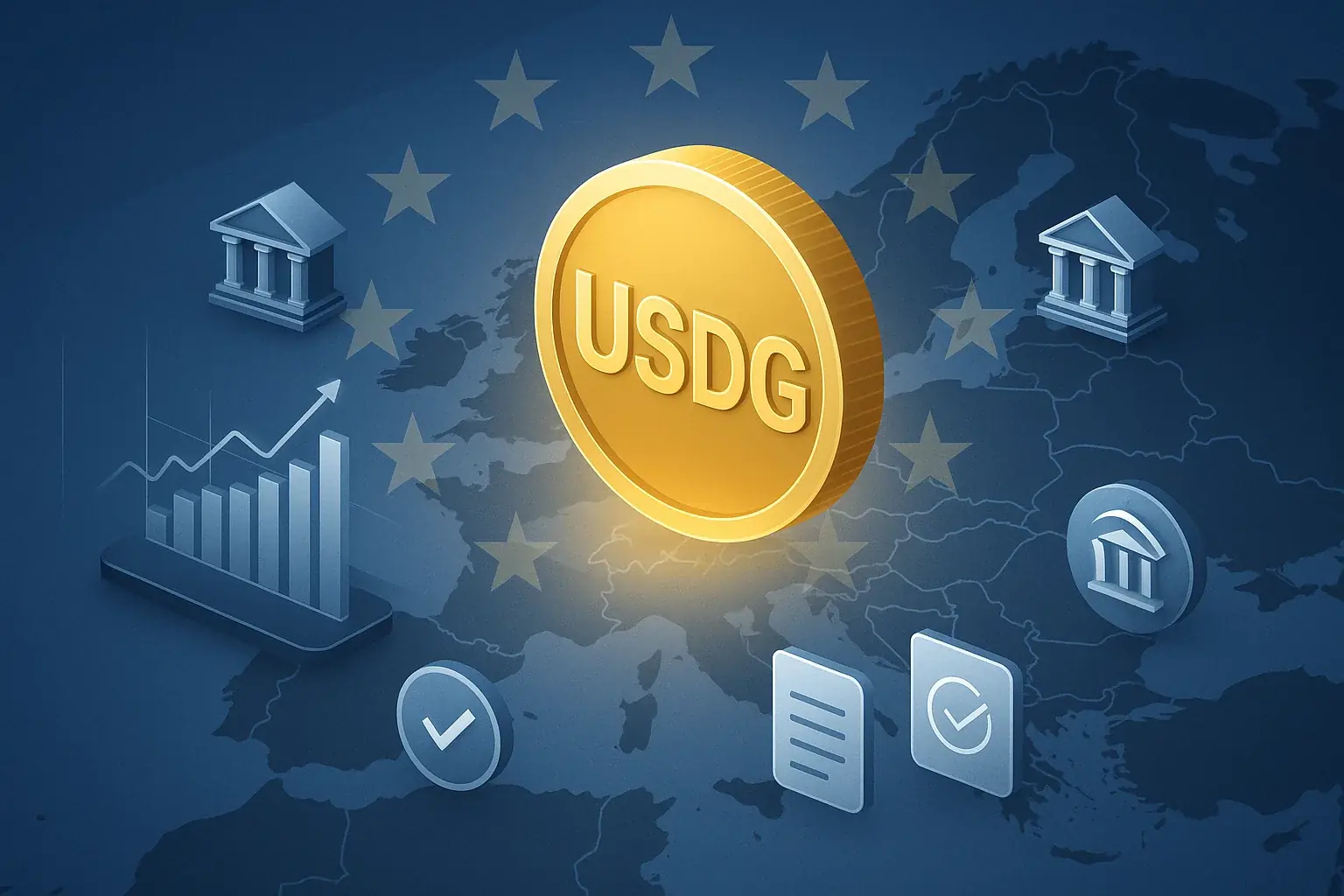
USDG: The First Regulated MiCA Stablecoin
Paxos launches USDG, the first MiCA-regulated stablecoin, marked by transparency, FMA licensing and full compliance with EU regulations.

Paxos launches USDG, the first MiCA-regulated stablecoin, marked by transparency, FMA licensing and full compliance with EU regulations.

Get the latest news, learn from experts, discover new tools, and find inspiration right in your inbox.
No spam. Unsubscribe anytime.
A powerful documentary on how Bitcoin and blockchain are reshaping money, power, and geopolitics—from El Salvador’s Bitcoin experiment and Europe’s regulatory revolution to the rise of decentralized finance and the new global financial order.
At the beginning of July 2025, Paxos officially launched its new stablecoin USDG on the European market, backed by the US dollar and fully compliant with the new MiCA (Markets in Crypto-Assets) regulation, which came into force in the European Union. It is the first time that a stablecoin issued by an American company has received approval from a European regulator and become a legal part of the EU financial system.
Licence and Transparency
Paxos has obtained an e-money licence from the Austrian financial regulator FMA. This allows the company to officially offer USDG throughout the European Union. The main advantage of the asset lies in its transparent structure: the currency is 100 per cent backed by liquid dollar reserves kept in separate bank accounts. All assets are subject to regular audits and reserve information is published in an accessible manner.
MiCA: The Path Towards Trust
The MiCA regulation, which came into force in 2025, represented a turning point in the regulation of cryptocurrencies in Europe. It aims to establish uniform rules for all digital assets, including stablecoins. Prior to MiCA, the European digital currency market was fragmented and many projects were in an uncertain legal situation. USDG is the first major example of how a project can successfully adapt to the new requirements and offer users a secure and legal instrument.
Strategy and Applications
Paxos is already in talks with several European fintech companies, as well as traditional banks. The company's strategy is to create a hybrid financial ecosystem in which blockchain and fiat systems coexist. USDG's stability makes it a useful tool for payments, international transfers and e-commerce transactions. In addition, it can be used as a liquid asset in decentralised finance protocols (DeFi), opening broad prospects for the development of a regulated DeFi in the EU.
Competition and Market Impact
Although USDT and USDC have dominated the stablecoin market so far, the introduction of USDG increases competition. At the same time, the regulated nature of the new currency could attract more conservative users and institutional investors who are wary of the instability of traditional stablecoins. It will also be a challenge for other issuers: there is now a benchmark represented by a fully compliant instrument.
Future Perspectives
The launch of USDG could mark the beginning of a new phase in the development of the European crypto market. It shows that digital assets and state regulation can coexist, creating a sustainable, transparent and efficient financial infrastructure. If the project proves its worth, it could become a model for future stablecoins around the world - especially in the context of the accelerated development of central bank digital currencies (CBDCs) and the growing need for reliable digital alternatives to the dollar and the euro.
This move is particularly significant in the context of the growing interest in CBDCs, which are increasingly discussed in the EU and beyond. In this scenario, USDG could act as a bridge between private and public approaches to digital assets.
In addition, the emergence of stable and transparent instruments such as USDG could accelerate the digitisation of the payments industry, increase the competitiveness of the European financial sector and reduce dependence on unstable cryptocurrencies. If the project gains broad acceptance, it could set a new standard of quality and transparency for all future initiatives in this area.
Read Next
Tether USDT under scrutiny, but surplus shows no immediate risks
Arthur Hayes warns of potential risks for Tether, but data show record surpluses and solid reserves according to CoinShares.
China, Dollar Escape: Crypto Investors Abandon USDT for Real Assets
The strengthening yuan is eroding the value of the USDT in China, while regulatory tightening turns stablecoins into risky assets.
Stablecoin under siege: Israel and China's push for digital sovereignty
Israel accelerates on the digital shekel while China expands the digital yuan, putting pressure on the dominance of dollar-linked stablecoins.
S&P downgrades Tether: risk for USDT and Juventus
S&P downgraded Tether to the lowest risk level, raising doubts about USDT's stability and the impact on Juventus' shareholder base.